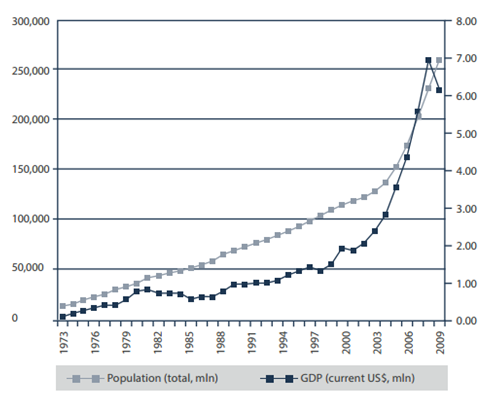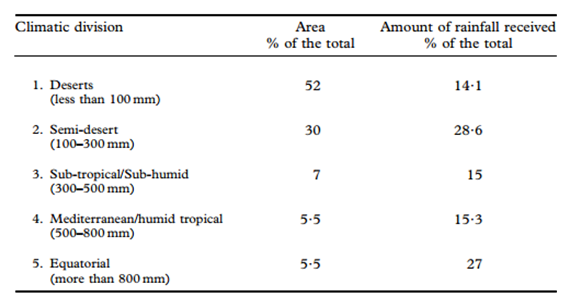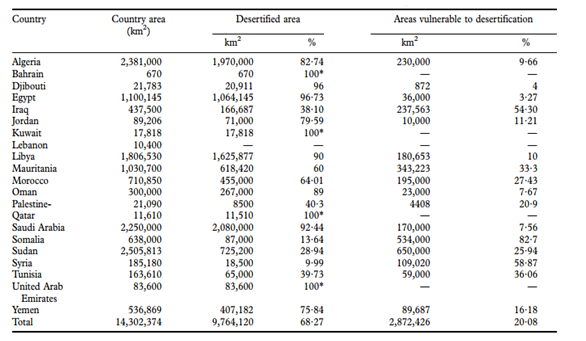Introduction
The United Arab Emirates (UAE) is an amalgamation of seven different emirates in the Middle East region. It has its capital in Abu Dhabi and has an estimated population of slightly more than 4 million people. Close to 80 percent of the population is made up of non-UAE nationals.
This paper examines the environmental problems of the UAE and how they can be alleviated. Arguably, the population of the UAE has been growing at the expense of the environment.
Environmental Problems in the UAE
All over the world, environmental problems remain a serious problem. However, the risks associated with environmental problems are higher in the developing world that is characterized by poverty and lack of important critical resources for dealing with the problems. Despite the steady increase in population, the people of the United Arab Emirates appear to have forgotten about the environment.
As a result of paying so much attention to business growth, the people of the UAE are now faced with serious environmental problems. Generally, environmental problems result from changes in environmental factors that threaten the existence of human beings.
Like many other countries around the world, the United Arab Emirates is faced with serious environmental problems that include lack of access to fresh water, desertification, and pollution as a result of oil spills. The various environmental issues of the UAE are discussed as follows.
Fresh Water Problem in the UAE
The increased population of UAE can be linked to the discovery of oil deposits in the region (Szabo, 2011). Although oil explorations have increased the nation’s wealth, it has also led to an increased demand for foreigners to provide labor for the fast-growing economy.
Figure 1 shows how the UAE’s population and Growth Domestic Product (GDP) have grown over the years. The figure clearly shows that both the GDP and population have been growing at a very fast pace.
Figure 1: Growth in the UAE

As explained by Szabo (2011), however, population and economic growth led to an increased demand for water. Whereas space in the UAE is not a major concern; meeting the demand for fresh water is a serious problem. Even though water may be found in different places across the UAE, it is mostly unsuitable for human consumption unless it goes through a desalination process.
The per capita ecological footprint of a UAE resident is estimated to be 10.7 hectares of land. As a consequence, the biggest problem faced by the UAE has nothing to do with the availability of land. The increase in population has, however, led to a scarcity of important natural resources. Freshwater is especially a critical natural resource, and its availability is a major concern among stakeholders in the UAE.
Ostensibly, the water that is used in the UAE originates from groundwater and desalination. As a result of high temperatures and low amounts of rainfall in the UAE, the nation is unable to meet the increased demand for water needed to support growth and urbanization (Szabo, 2011). This further worsened by the fact that residents live in luxury and are not keen to adhere to calls by the government to conserve the environment.
There are concerns that the fresh water problem in the UAE may be worsened by the effects of climate change associated with increased human activities in the country. Arguably, the effect of climate change can have a serious impact on the survival of UAE nationals. Moreover, soil and water salinity could seriously affect agricultural activities and food production.
The UAE is making every effort to respond to the increased demand for fresh water for residents by relying heavily on desalination. Consequently, the number of desalination plants has been growing with time to meet the increased demand for the service. Most desalination plants in the world are concentrated in the UAE and especially in the country’s capital, Abu Dhabi (Szabo, 2011).
The growth in the number of desalination plants is also as a result of a decrease in the cost of relevant technologies for desalinating water. Besides efforts to desalinate water, there is increased awareness among politicians that water management is a critical requirement for the survival of the nation and the realization of meaningful development.
Through well-planned campaigns, residents of the UAE have been sensitized on the importance of water resource management. Residents are also advised to use water responsibly. One strategy that has been used to control the consumption of water involves increasing fees for water usage.
UAE authorities have also turned to legal experts to get advice on the enactment of water conservation laws aimed at ensuring that the use of water is properly regulated. The Government also came up with the idea of giving subsidies to farmers as a way of ensuring that they do not waste water through their farming activities.
Desertification Problem in the UAE
Desertification is generally regarded as the degradation of land as a result of climate change and irresponsible human activities. A huge percentage of the UAE is composed of arid or semi-arid land. Consequently, the country is characterized by limited water resources and a very harsh environment. Table 1 shows the distribution of rainfall in the Arab region.
Table 1: Distribution of Rainfall in the Arab Region

In the past, the UAE depended mostly on agricultural activities to feed its people. This has, however, been affected by the problem of desertification. Despite numerous efforts to minimize the effects of desertification, it is still the greatest problem faced by the UAE (Abahussain et al., 2002). Arguably, the degradation of land in the UAE is due to misuse.
Once again, the steady increase in population is blamed for the rapid degradation of land in the UAE. Human activities that have contributed to degradation include overgrazing, deforestation, and increased cultivation.
Because of the high population in the UAE that has led to increased demand for land and water resources, land degradation is currently a major problem in the UAE. Based on research findings, most land resources in the Arab region, including the United Arab Emirates, have been affected by desertification. This is illustrated in table 2.
Table 2: Statistics on Desertification in the Arab Region

According to Abahussain et al. (2002), the forces behind desertification in the UAE include population growth and urbanization, increased water demand, intensification of agricultural activities, deforestation, droughts, and climate changes.
Several activities may be undertaken to minimize the effect of desertification. Relevant activities that can help to deal with desertification include the establishment of relevant laws and regulations, carrying out surveys about water resources, establishing water treatment plants, and encouraging individuals to plant trees.
Oil Spills Problem in the UAE
Unintended oil spills from oil refineries and oil mining activities around the coastal areas on the UAE have a major effect on marine life as well as the ecosystem. Purportedly, oil pollution mostly originates from the activities that take place on land (Todorova, 2013). Oil spills also generate smells that can easily affect the health of human beings as well as animals.
The UAE is doing everything possible to address the oil spill problem to provide a healthy environment. Although dealing with the oil spill problem is quite involving and requires so much in terms of time and resources, UAE is determined to eradicate the oil spill problem.
Ostensibly, efforts to address the oil spill problem have prompted the UAE to turn to the use of an oil spill detection system to detect and address the oil spill problem in good time (Todorova, 2013). Efforts have also been made to develop an oil spill contingency plan.
Conclusion
Without a doubt, population growth and urbanization are to blame for environmental problems witnessed in the UAE. As explained in this paper, the demand for water and other natural resources in the UAE went up as a result of population growth.
The UAE government is doing everything possible to address environmental issues including the development of policies and regulation to govern the use of resources and creating awareness among residents about the effects of environmental problems such as desertification, oil spills and lack of access to fresh water.
In general, efforts by the government are meant to model responsible behavior among citizens and to ensure that individuals obey rules and regulations designed to safeguard the environment.
References
Abahussain, A. A., Abdu, A., Al-Zubari, W. K., El-Deen, N. A. & Abdul-Raheem, M. (2002). Desertification in the Arab Region: Analysis of Current Status and Trends. Journal of Arid Environments, 51, 521 – 545
Szabo, S. (2011). The Water Challenge in the UAE. Web.
Todorova, V. (2013). Closer eye needed on oil spills in the UAE. Web.